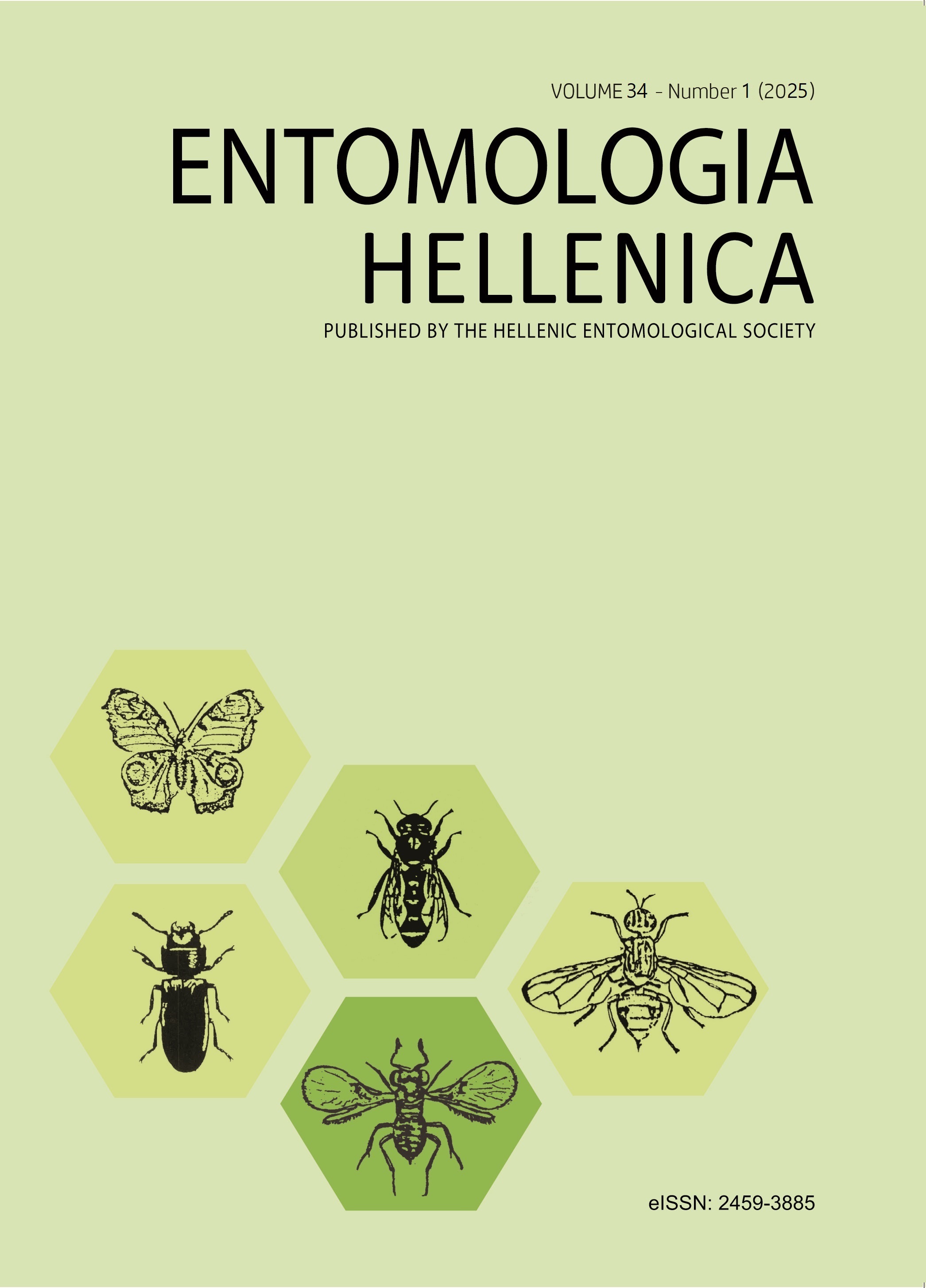Pollinator Diversity and Their Role in Boosting Melon and Cucumber Yields in Khenchela
Περίληψη
The present study was undertaken in the municipality of El Hamma, Khenchela, Algeria to investigate insect pollination of cucumber (Cucumis sativus L.) and melon (Cucumis melo L.) grown in a semi-arid region. The results showed that cucumber and melon flowers attracted different pollinator species. A total of 547 individuals, belonging to 47 insect species, 23 families and five insect orders (Hymenoptera, Diptera, Coleoptera, Lepidoptera, and Hemiptera) were recorded. However, honeybees (Apis mellifera L.) were the most important pollinators during the flowering period. They visited five flowers per minute, whereas Megachile rotundata F. was the quickest visitor (8 flowers/min). The abundance of floral resources was positively correlated with flower species richness. The diversity of pollinator communities was calculated using Shannon index (H') values ranging from 1.14 to 4.01, while the evenness index ranged from 0.03 to 0.06. This study highlights the pivotal role of entomophilous pollination in ensuring food security, as it constitutes a fundamental ecosystem service. It underscores the significance of insect biodiversity in sustaining crop pollination. Consequently, it is imperative to establish nests designated for pollinating insects, plant wildflowers and shrubs, minimize pesticide use, provide clean water sources, and educate farmers on pollinator-friendly practices to enhance agricultural crop quality.
Λεπτομέρειες άρθρου
- Πώς να δημιουργήσετε Αναφορές
-
MAGHNI, N., RAIS, L., SAIDI, M., & Ortiz-Sánchez, F. J. (2025). Pollinator Diversity and Their Role in Boosting Melon and Cucumber Yields in Khenchela. ENTOMOLOGIA HELLENICA, 34(1), 83–99. https://doi.org/10.12681/eh.39364
- Ενότητα
- Articles

Αυτή η εργασία είναι αδειοδοτημένη υπό το CC Αναφορά Δημιουργού – Μη Εμπορική Χρήση – Παρόμοια Διανομή 4.0.
Authors who publish with this journal agree to the following terms:
Authors retain copyright and grant the journal right of first publication with the work simultaneously licensed under a Creative Commons 4.0 license.
Authors are able to enter into separate, additional contractual arrangements for the non-exclusive distribution of the journal's published version of the work (e.g. post it to an institutional repository or publish it in a book), with an acknowledgement of its initial publication in this journal. Authors are permitted and encouraged to post their work online (preferably in institutional repositories or on their website) prior to and during the submission process, as it can lead to productive exchanges, as well as earlier and greater citation of published work.



